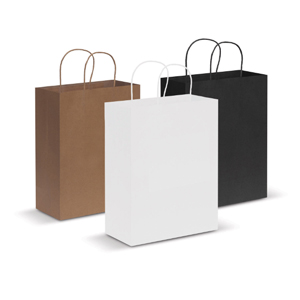

AS4736-2006
The Australian standard of compostability and biodegradability which must be met for a product to be certified as biodegradable. It is modeled upon Europe’s standard, EN13432.
Bamboo
Bamboo fabric is a natural textile that is light and strong, has excellent wicking properties and is naturally antibacterial. Bamboo fibres resembles cotton in its unspun form, a puffball of light, airy fibres. Extensive bleaching is needed to turn fibre white, but companies producing organic fabric leave it unbleached. Bamboo fabric is favoured by companies looking for sustainable textiles because the plant grows quickly and generally does not require pesticides or herbicides. The fabric also has insulating properties to keep the wearer cooler in summer and warmer in winter.
Biodegradable
A product is biodegradable when, under suitable conditions, can break down into its natural parts and disappear without harmful effects on the environment. Some biodegrable products take years to fully decompose.
Biomass
Plant materials and animal waste used as fuel.
Carbon Debts
Our activities, such as driving cars or using electricity, produces greenhouse gases that lead to global warming. Most people are said to be accruing a carbon debt, or an increasingly high level of carbon consumption for carrying out such activities. Carbon offsetting is one way to neutralise the carbon debt.
Carbon Dioxide (CO2)
A naturally occurring greenhouse gas in the atmosphere, concentrations of which have increased substantially as a result of humans activity, such as burning of coal, oils and gas.
Carbon Footprint
A calculation of the greenhouse gas emissions associated with a specific activity, an individual, business or organisation.
Carbon Neutral
Refers to the neutral total carbon release. The net amount of carbon released is balanced with the amount sequestered or offset. Carbon offsetting is one way for business and individuals to become Carbon Neutral. Note that simply reducing carbon consumption does not equate to being carbon neutral.
Carbon Offset
A process whereby an individuals or organisation purchases carbon credits to neutralise its global warming impact. Each carbon credit represents the abatement or sequestration of one tonne of CO2-equivalent greenhouse gases – or carbon emissions – from our atmosphere.
Chlorofluorocarbons (CFCs)
Synthetic products, which do not occur naturally and contain chlorine and fluorine; commonly used in various industrial processes and as refrigerants and, prior to 1990, as a propellant gas for sprays. CFCs deplete ozone in the stratosphere and are powerful greenhouse gases.
Compostable
Materials can be biodegradeable, however to be deemed compostable they need to conform to performance standards such as AS4736 in Australia. Composting refers to the helping of organic matters to decompose. It can be done organically on a small-scale or industrially. Compost can then be used in landscaping and agriculture as fertiliser. Commercially compostable products have to decompose within a certain time frame under tightly controlled conditions.
Crank-Charging Electronics
Using old-fashioned kinetic energy and a tiny energy cell, some products can be recharged by repeatedly turning a lever. Flashlights, radios and battery chargers are common crank-charge items. Some companies are experimenting with wind-up mobile phones, MP3 players and laptop computers.
Energy Efficiency
The most efficient products require the least energy to generate the most output. For example, compact fluorescent light bulbs use far less energy than typical incandescent lights while producing the same brightness; therefore, they are more energy efficient. Engineers compute energy efficiency using a ration, written as a decimal between 1 and 1. The close a method’s ratio is to 1, the more efficient it is.
Fair Trade
A model of international trade and a social movement that supports paying a fair price and upholding social and environmental standards, particularly relating to exports from developing and Third World countries global warming increase in the average temperature of the earth’s surface.
Green
A term that is used interchangeably with ‘environmentally preferable’, this definition comes from Presidential Executive Order 13101, and is defined as “products or services that reduce the health and environmental impacts compared to similar products and services used for the same purpose”.
Greenhouse Effect
The process that raises the temperature of air in the lower atmosphere as a result of trapped greenhouse gases.
Green Tape
Similar to ‘red tape’ in that it refers to the bureaucracy of governments. May also refer to the new regime of legislation that is being introduced to ensure the compliance of businesses to environmental initiatives.
Greenwashing
Used to describe green advertising, labelling and other sales or promotional activities that use misleading, vague, irrelevant or unsubstantiated environmental claims to sell a product or service. Greenwashing is a serious problem as it confuses consumers and creates a serious disadvantage for companies and products trying to do the right thing.
Jute
Jute is a completely biodegradable fibre. Though it’s found most in materials like burlap, innovations with jute have made it possible to use it to construct a silk-like material. Jute is abundant in Southeast Asia.
LED Light Bulbs
Though slightly more expensive than fluorescent or halogen bulbs, LED lights have a much higher energy-efficiency ratio. The electric bill savings more than makes up for their higher sticker prices.
Organic Cotton
Grown without pesticides and from plants that are not genetically modified, organic cotton is popular among fair-traders and agricultural purists. Organic farming requires crop rotation to reduce pests and maintain soil nutrients. This, in combination with lower abundance due to no genetic modifications, makes it more expensive to produce. It can cost the end user 20 to 50 percent more.
PET (Polyethylene Terephthalate)
This material is the recyclable part of plastic soda and water bottles. It has been used in the past to make everything from clothes and carpet to more bottles.
Photodegradable
A material, usually plastic, that can degrade as a result of exposure to natural sunlight.
Polypropylene
Plastic-based material resistant to heat, solvents and acids. Used in Australian bank-notes.
Post-consumer waste
A waste type produced by the end consumer of a material stream; that is, where the waste-producing use did not involve the production of any other product.
Pre-Consumer or Post-Industrial versus Post-Consumer
During any manufacturing process, some materials are inevitably scrapped. Instead of throwing these scraps away, some companies use them for other purposes. These are pre-consumer recycled materials. Post-consumer recycled materials come from items that have been used and then recycled.
PVC (Polychlorinated Vinyl)
A common plastic, capable of leaching substances into the environment. Plasticizers added to PVC may cause chronic health conditions including brain cancer.
Recycled vs. Recyclable
Products labelled recycled are made from materials that have been used and reprocessed in to something else. The materials in recyclable products are able to be recycled, if the user disposes of them in a recycling facility. They can, but not necessarily, be used to make a recycled product.
Reduce
Act of purchasing or consuming less to from the outset so that there is no need to reuse or recycle later.
Renewable Resources
A natural resource qualifies as renewable if it is naturally replenished at least as fast as it is consumed, such as oxygen and water. They can become non-renewable, however, if used faster than the environment can replenish them. Also included in the category are products such as paper and leather.
Sustainability
The potential longevity of ecological systems. Sustainable agriculture, for example, refers to a farm’s ability to produce indefinitely without causing irreparable damage to the ecosystem; in other words, it meets the needs of the present without hindering the ability to do the same in the future. Business, sustainability refers to protocols that have little or no adverse effects on the environment.
Sustainable communities
Communities capable of maintaining their present levels of growth without damaging effects.
*Information supplied by Australian Promotional Products Association (APPA)




